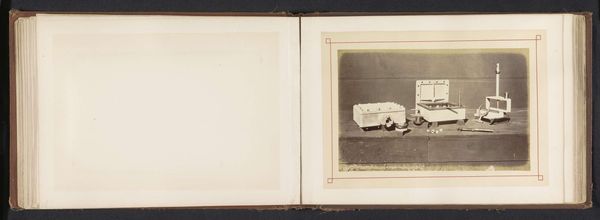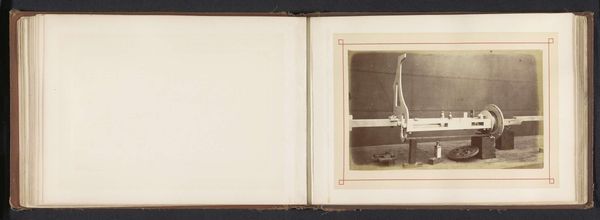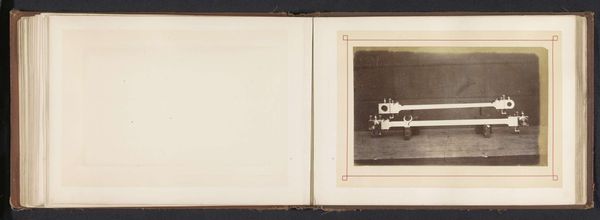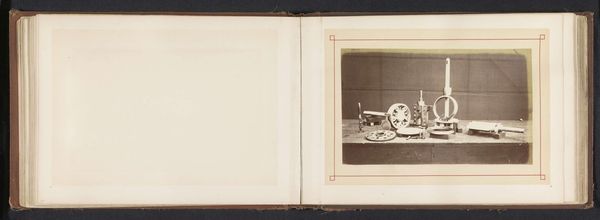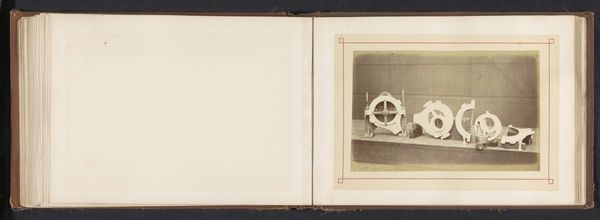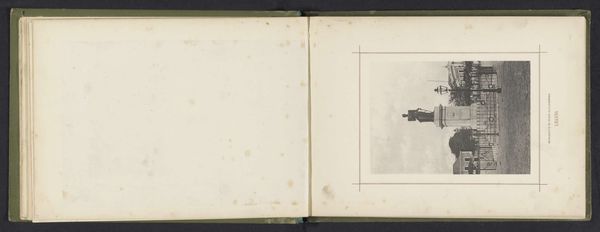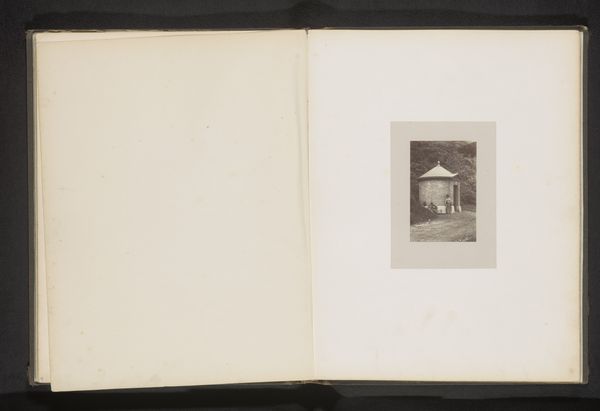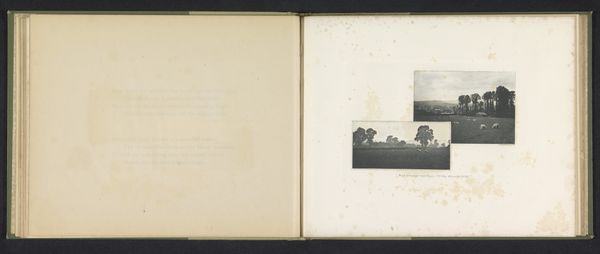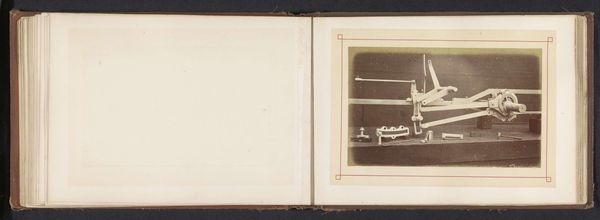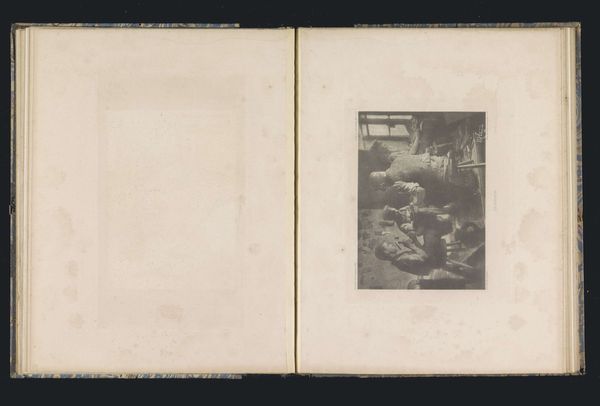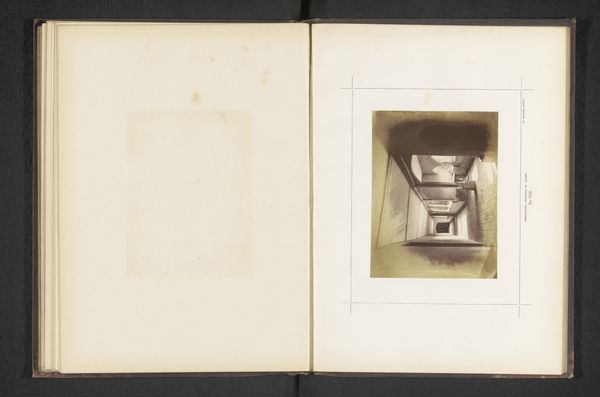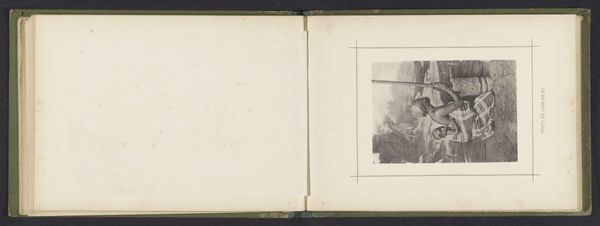
photography
#
still-life-photography
#
water colours
#
photography
#
watercolor
Dimensions: height 140 mm, width 225 mm
Copyright: Rijks Museum: Open Domain
Curator: This is a fascinating, almost surreal still life, titled "Onderdelen van een stoomlocomotief," or "Parts of a Steam Locomotive," captured by George Gardner Rockwood sometime before 1871. It is presented as a photographic print, tinted with watercolor. Editor: Immediately, I'm struck by how modern it feels. There’s something very stark and industrial, but the sepia tones lend an antique warmth. It feels a bit like looking at mechanical relics. Curator: Rockwood really deconstructed the familiar image of a locomotive, didn’t he? He’s broken it down into its constituent parts and arranged them almost like characters in a play. It speaks to the rising mechanical prowess of the industrial era. Editor: The arrangement is quite striking, too. Linear and ordered, with each component meticulously presented against that dark background. The sharp edges and simple geometry have a minimalist appeal despite the vintage presentation. Did Rockwood have any known relationship with formal engineering studies? Curator: There’s little evidence to suggest a deep dive into engineering principles. His talent, by all accounts, tended towards portraiture, but in this instance, it reads to me as a love letter to progress and, indeed, ingenuity. But more like a whimsical sonnet, don't you think? The watercolor tinting softens the harshness you might expect from mechanical parts. It humanizes them, perhaps. Editor: It's interesting that you describe it as a love letter. From a formal standpoint, it can be seen that Rockwood created strong contrasts in color to provide balance. It is indeed whimsical in color yet stark in construction. Perhaps those steam engine parts felt as alien and magical to him as they feel to us today. Curator: Exactly. And he chose to render them as precious artifacts, elevating them with a photographic watercolor process typically reserved for portraits or landscapes. A curious merging of disciplines that makes the end product far more powerful than it might appear at first glance. Editor: Indeed, that clash of mediums truly complicates and elevates its conceptual impact; one must also think about photography’s evolving relationship with commercial viability. I feel that after looking closely at this piece, I can see both the industrial present and a more fragile and wistful future within it.
Comments
No comments
Be the first to comment and join the conversation on the ultimate creative platform.
